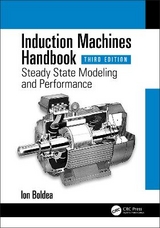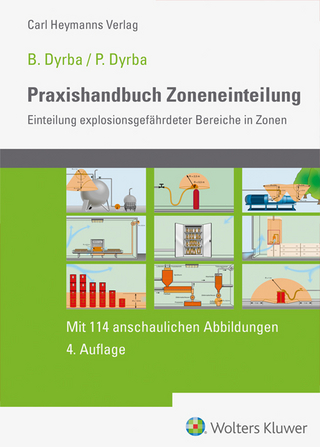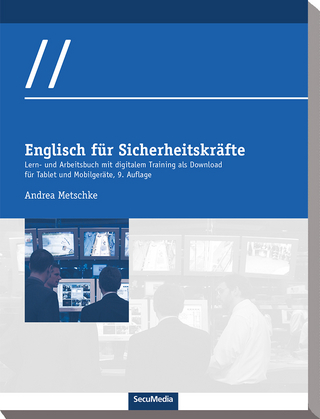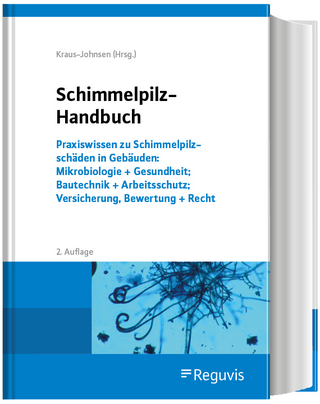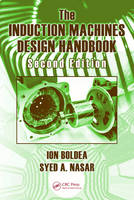
The Induction Machines Design Handbook
Crc Press Inc (Verlag)
978-1-4200-6668-5 (ISBN)
- Titel erscheint in neuer Auflage
- Artikel merken
Developments in power electronics and digital control have made the rugged, low-cost, high-performance induction machine the popular choice of electric generator/motor in many industries. As the induction machine proves to be an efficient power solution for the flexible, distributed systems of the near future, the dynamic worldwide market continues to grow. It is imperative that engineers have a solid grasp of the complex issues of analysis and design associated with these devices.
The Induction Machines Design Handbook, Second Edition satisfies this need, providing a comprehensive, self-contained, and up-to-date reference on single- and three-phase induction machines in constant and variable speed applications. Picking up where the first edition left off, this book taps into the authors’ considerable field experience to fortify and summarize the rich existing literature on the subject. Without drastically changing the effective logical structure and content of the original text, this second edition acknowledges notable theoretical and practical developments in the field that have occurred during the eight years since the first publication. It makes corrections and/or improvements to text, formulae, and figures.
New material includes:
Introduction of more realistic specifications and reworked numerical calculations in some of the examples
Changes in terminology
Discussion of some novel issues, with illustrative results from recent literature
New and updated photos
Data on new mild magnetic materials (metglass)
An industrial "sinusoidal" two-phase winding
Illustrations of finite element method airgap flux density
Enhanced presentations of unbalanced voltage and new harmonic-rich voltage supply IM performance
Discussion of stator (multiconductor) winding skin effect by finite element method
Broad coverage of induction machines includes applications, principles and topologies, and materials, with numerical examples, analysis of transient behavior waveforms and digital simulations, and design sample cases. The authors address both standard and new subjects of induction machines in a way that will be both practically useful and inspirational for the future endeavors of professionals and students alike.
Professor Ion Boldea, University Politehnica, Timisoara, Romania, is an IEEE Fellow and has worked, published, lectured and consulted extensively on linear and rotary electric motors and generators: theory, design and control. He has published 13 books in USA and UK throughout the last 30 years. Professor Syed Abu Nasar is James R. Boyd Professor of Electrical Engineering (Emeritus) at the University of Kentucky. He was born in India and got his doctorate in Electrical Engineering at the University of California, Berkeley in 1963. His research concerns electric motors. He served as the chair of the Electrical Engineering department at the University of Kentucky from 1989 to 1997. He is a Life Fellow of the IEEE and the recipient of the 2000 IEEE Nikola Tesla Award.
Induction Machines: An Introduction
Electric energy and induction motors
A historical touch
Induction machines in applications
Construction Aspects and Operation Principles
Construction aspects of rotary IMs
Construction aspects of linear induction motors
Operation principles of IMs
Magnetic, Electric, and Insulation Materials for IM
Soft magnetic materials
Core (magnetic) losses
Electrical conductors
Insulation materials
Induction Machine Windings and Their MMFs
The ideal traveling mmf of a.c. windings
A primitive single-layer winding
A primitive two-layer chorded winding
The mmf harmonics for integer q
Rules for designing practical a.c. windings
Basic fractional q three-phase a.c. windings
Basic pole-changing three-phase a.c. windings
Two-phase a.c. windings
Pole-changing with single-phase supply induction motors
Special topics on a.c. windings
The mmf of rotor windings
The "skewing" mmf concept
The Magnetization Curve and Inductance
Equivalent airgap to account for slotting
Effective stack length
The basic magnetization curve
The emf in an a.c. winding
The magnetization inductance
Leakage Inductances and Resistances
Leakage fields
Differential leakage inductances
Rectangular slot leakage inductance/single layer
Rectangular slot leakage inductance/two layers
Rounded shape slot leakage inductance/two layers
Zig-zag airgap leakage inductances
End-connection leakage inductance
Skewing leakage inductance
Rotor bar and end ring equivalent leakage inductance
Basic phase resistance
The cage rotor resistance
Simplified leakage saturation corrections
Reducing the rotor to stator
Steady-State Equivalent Circuit and Performance
Basic steady-state equivalent circuit
Classification of operation modes
Ideal no-load operation
Short-circuit (zero speed) operation
No-load motor operation
The motor mode of operation
Generating to power grid
Autonomous induction generator mode
The electromagnetic torque
Efficiency and power factor
Phasor diagrams: Standard and new
Alternative equivalent circuits
Unbalanced supply voltages
One stator phase is open
Unbalanced rotor windings
One rotor phase is open
When voltage varies around rated value
When stator voltage have time harmonics
Starting and Speed Control Methods
Starting of cage-rotor induction motors
Starting of wound-rotor induction motors
Speed control methods for cage-rotor induction motors
Variable frequency methods
Speed control methods for wound rotor IMs
Skin and On-Load Saturation Effects
The skin effect
Skin effects by the multilayer approach
Skin effect in the end rings via the multilayer approach
The double cage behaves like a deep bar cage
Leakage flux path saturation-a simplified approach
Leakage saturation and skin effects-a comprehensive analytical approach
The FEM approach
Standardized line-start induction motors
Airgap Field Space Harmonics, Parasitic Torques, Radial Forces, and Noise
Stator mmf produced airgap flux harmonics
Airgap field of a squirrel cage winding
Airgap conductance harmonics
Leakage saturation influence on airgap conductance
Main flux saturation influence on airgap conductance
The harmonics-rich airgap flux density
The eccentricity influence on airgap magnetic conductance
Interactions of mmf (or step) harmonics and airgap magnetic conductance harmonics
Parasitic torques
Radial forces and electromagnetic noise
Losses in Induction Machines
Loss classifications
Fundamental electromagnetic losses
No-load space harmonics (stray no-load) losses in nonskewed IMs
Load space harmonics (stray load) losses in nonskewed IMs
Flux pulsation (stray) losses in skewed insulated bars
Interbar current losses in uninsulated skewed rotor cages
No-load rotor skewed uninsulated cage losses
Load rotor skewed uninsulated cage losses
Rules to reduce full load stray (space harmonics) losses
High frequency time harmonics losses
Computation of time harmonics conductor losses
Time harmonics interbar rotor current losses
Computation of time harmonic core losses
Thermal Modeling and Cooling
Some air cooling methods for IMs
Conduction heat transfer
Convection heat transfer
Heat transfer by radiation
Heat transport (thermal transients) in a homogenous body
Induction motor thermal transients at stall
Intermittent operation
Temperature rise (TON) and fall (TOFF) times
More realistic thermal equivalent circuits for IMs
A detailed thermal equivalent circuit for transients
Thermal equivalent circuit identification
Thermal analysis through FEM
Induction Machine Transients
The phase coordinate model
The complex variable model
Steady state by the complex variable model
Equivalent circuits for drives
Electrical transients with flux linkages as variables
Including magnetic saturation in the space phasor model
Saturation and core loss inclusion into the state–space model
Reduced order models
The sudden short-circuit at terminals
Most severe transients (so far)
The abc–dq model for PWM inverter fed IMs
First order models of IMs for steady-state stability in power systems
Multimachine transients
Subsynchronous resonance (SSR)
The m/Nr actual winding modeling for transients
Motor Specifications and Design Principles
Typical load shaft torque/speed envelopes
Derating due to voltage time harmonics
Voltage and frequency variation
Specifying induction motors for constant V and f
Matching IMs to variable speed/torque loads
Design factors
Design features
The output coefficient design concept
The rotor tangential stress design concept
IM Design Below 100KW and Constant V and f (Size Your Own IM)
Design specifications by example
The algorithm
Main dimensions of stator core
The stator winding
Stator slot sizing
Rotor slots
The magnetization current
Resistances and inductances
Losses and efficiency
Operation characteristics
Temperature rise
IM Design Above 100KW and Constant V and f (Size Your Own IM)
High voltage stator design
Low voltage stator design
Deep bar cage rotor design
Double cage rotor design
Wound rotor design
IM with wound rotor-performance computation
Induction Machine Design for Variable Speed
Power and voltage derating
Reducing the skin effect in windings
Torque pulsations reduction
Increasing efficiency
Increasing the breakdown torque
Wide constant power speed range via voltage management
Design for high and super-high speed applications
Sample design approach for wide constant power speed range
Optimization Design
Essential optimization design methods
The augmented Lagrangian multiplier method (ALMM)
Sequential unconstrained minimization
A modified Hooke–Jeeves method
Genetic algorithms
Three Phase Induction Generators
Self-excited induction generator (SEIG) modeling
Steady state performance of SEIG
The second order slip equation model for steady state
Steady state characteristics of SEIG for given speed and capacitor
Parameter sensitivity in SEIG analysis
Pole changing SEIGs
Unbalanced steady state operation of SEIG
Transient operation of SEIG
SEIG transients with induction motor load
Parallel operation of SEIGs
The doubly-fed IG connected to the grid
Linear Induction Generators
Classifications and basic topologies
Primary windings
Transverse edge effect in double-sided LIM
Transverse edge effect in single-sided LIM
A technical theory of LIM longitudinal end effects
Longitudinal end-effect waves and consequences
Secondary power factor and efficiency
The optimum goodness factor
Linear flat induction actuators (no longitudinal end-effect)
Tubular LIAs
Short-secondary double-sided LIAs
Linear induction motors for urban transportation
Transients and control of LIMs
Electromagnetic induction launchers
Super-High Frequency Models and Behavior of IMs
Three high frequency operation impedances
The differential impedance
Neutral and common mode impedance models
The super-high frequency distributed equivalent circuit
Bearing currents caused by PWM inverters
Ways to reduce PWM inverter bearing currents
Testing of Three-Phase IMs
Loss segregation tests
Efficiency measurements
The temperature-rise test via forward short-circuit (FSC) method
Parameter estimation tests
Noise and vibration measurements: from no-load to load
Single-Phase Induction Machines: The Basics
Split-phase induction motors
Capacitor induction motors
The nature of stator-produced airgap field
The fundamental mmf and its elliptic wave
Forward-backward mmf waves
The symmetrical components general model
The d-q model
The d-q model of star Steinmetz connection
Single-Phase Induction Motors: Steady State
Steady state performance with open auxiliary winding
The split-phase and the capacitor IM: currents and torque
Symmetrization conditions
Starting torque and current inquires
Typical motor characteristic
Nonorthogonal stator windings
Symmetrization conditions for nonorthogonal windings
Mmf space harmonic parasitic torques
Torque pulsations
Inter-bar rotor currents
Voltage harmonics effects
The doubly tapped winding capacitor IM
Single-Phase IM Transients
The d-q model performance in stator coordinates
Starting transients
The multiple reference model for transients
Including the space harmonics
Single-Phase Induction Generators
Steady state model and performance
The d-q model for transients
Expanding the operation range with power electronics
Single-Phase IM Design
Sizing the stator magnetic circuit
Sizing the rotor magnetic circuit
Sizing the stator windings
Resistances and leakage reactances
The magnetization reactance Xmm
The starting torque and current
Steady state performance around rated power
Guidelines for a good design
Optimization design issues
Single-Phase IM Testing
Loss segregation in split-phase and capacitor-start IMs
The case of closed rotor slots
Loss segregation in permanent capacitor IMs
Speed (slip) measurements
Load testing
Complete torque-speed curve measurements
Index
| Erscheint lt. Verlag | 5.1.2010 |
|---|---|
| Reihe/Serie | Electric Power Engineering Series |
| Zusatzinfo | 39 Tables, black and white; 508 Illustrations, black and white |
| Verlagsort | Bosa Roca |
| Sprache | englisch |
| Maße | 178 x 254 mm |
| Gewicht | 1565 g |
| Themenwelt | Technik |
| ISBN-10 | 1-4200-6668-4 / 1420066684 |
| ISBN-13 | 978-1-4200-6668-5 / 9781420066685 |
| Zustand | Neuware |
| Haben Sie eine Frage zum Produkt? |
aus dem Bereich
